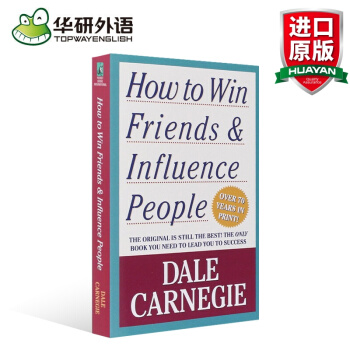

具体描述
基本信息
书名:How to Win Friends & Influence People人性的弱点
难度:Lexile蓝思阅读指数1020L
作者:Dale Carnegie戴尔·卡耐基
出版社名称:Pocket Books
出版时间:2010
语种:英文
ISBN:9781439199190
商品尺寸:10.4 x 1.9 x 17.2 cm
包装:简装
页数:276
编辑推荐
How to Win Friends & Influence People《人性的弱点》作为卡耐基成功的励志经典,荟萃了卡耐基思想理论的精华部分。该书在1937年首次出版,刚一上市就风靡全球,几十年间被翻译成全世界几乎所有的主要语言,全球总销量已达1.5亿余册,被视为社交心理和沟通技巧的“圣经”。它改变了千千万万人的命运。发明之王爱迪生、相对论鼻祖爱因斯坦、印度圣雄甘地、“米老鼠”的父亲华特·迪士尼、建筑业奇迹的创造者里维父子、旅馆业巨子希尔顿、白手起家的台湾塑料大王王永庆、麦当劳的创始人雷·克洛克等等,都深受卡耐基思想和观点的激励和影响。
“卡耐基所创立并倡导的个人成功学已成为当代有志青年实现抱负、迈向成功的阶梯,通过他的传播和教导,无数人明白了积极生活的意义,并由此改变了自身的命运。卡耐基留给我们的绝不仅仅是几本书或几所培训学校,其真正的价值在于:他把个人成功的技巧传授给了每一个不甘人后的青年。” ——约翰·肯尼迪(美国第35任总统)
“我从8岁就开始读卡耐基先生的著作,现在的年轻人,你越早读卡耐基的作品,你的人生就越早获得启发。” ——沃伦?巴菲特(股神、全球著名投资商)
“戴尔?卡耐基的这些原则如魔术般令人震惊,他改变了3亿人的命运和生活。”——鲁伯特?默多克(美国传媒大亨)
“与所能取得的成就相比,现在的我们仿佛是半醒着,只利用了身心资源的一部分。卡耐基因为帮助职场男女开发他们蕴藏的潜能,掀起了一场席卷全球的成人教育风暴。”——威廉·詹姆斯(哈佛大学心理学教授)
“在人类出版史上,没有哪一本书能与卡耐基著作的深入人心相比肩。也唯有卡耐基的书,才能在作者辞世后,长期占据我们的排行榜。” ——《纽约时报》
YOU CAN GO AFTER THE JOB YOU WANT—AND GET IT!
YOU CAN TAKE THE JOB YOU HAVE—AND IMPROVE IT!
YOU CAN TAKE ANY SITUATION—AND MAKE IT WORK FOR YOU!
ACHIEVE YOUR MAXIMUM POTENTIAL WITH How to Win Friends & Influence People
A MUST-READ FOR THE TWENTY-FIRST CENTURY
MORE THAN 15 MILLION COPIES SOLD!
“When… Dale Carnegie wrote his ground-breaking guide How to Win Friends and Influence People he set a ball rolling that has never stopped gathering momentum. The book… gave birth to a self-improvement industry that spans the globe.” —— Daily Express
内容简介
How to Win Friends & Influence People《人性的弱点》的作者戴尔?卡耐基,美国“成人教育之父”。20世纪早期,美国经济陷入萧条,战争和贫困导致人们失去了对美好生活的愿望,而卡耐基独辟蹊径地开创了一套融演讲、推销、为人处世、智能开发于一体的教育方式,他运用社会学和心理学知识,对人性进行了深刻的探讨和分析。《人性的弱点》讲述的许多普通人通过奋斗获得成功的真实故事,激励了无数陷入迷茫和困境的人,帮助他们重新找到了自己的人生。
通过《人性的弱点》一书可以学到:处理人际关系的3大技巧;使人喜欢你的6大方法;说服他人的12种技巧;领导他人的9大原则。
Dale Carnegie’s rock-solid, time-tested advice in this book has carried countless people up the ladder of success in their business and personal lives. One of the most groundbreaking guidebooks of all time, How to Win Friends & Influence People will teach you:
* THE SIX WAYS TO MAKE PEOPLE LIKE YOU
* THE TWELVE WAYS TO WIN PEOPLE TO YOUR WAY OF THINKING
* THE NINE WAYS TO CHANGE PEOPLE WITHOUT AROUSING RESENTMENT
and much, much more!
目录
Preface to Revised Edition by Dorothy Carnegie
How This Book Was Written—and Why by Dale Carnegie
Nine Suggestions on How to Get the Most Out of This Book
PART ONE Fundamental Techniques in Handling People
1 “If You Want to Gather Honey, Don’t Kick Over the Beehive”
2 The Big Secret of Dealing with People
3 “He Who Can Do This Has the Whole World with Him. He Who Cannot Walks a Lonely Way”
PART TWO Six Ways to Make People Like You
1 Do This and You’ll Be Welcome Anywhere
2 A Simple Way to Make a Good First Impression
3 If You Don’t Do This, You Are Headed for Trouble
4 An Easy Way to Become a Good Conversationalist
5 How to Interest People
6 How to Make People Like You Instantly
PART THREE How to Win People to Your Way of Thinking
1 You Can’t Win an Argument
2 A Sure Way of Making Enemies—and How to Avoid It
3 If You’re Wrong, Admit It
4 A Drop of Honey
5 The Secret of Socrates
6 The Safety Valve in Handling Complaints
7 How to Get Cooperation
8 A Formula That Will Work Wonders for You
9 What Everybody Wants
10 An Appeal That Everybody Likes
11 The Movies Do It. TV Does It. Why Don’t You Do It?
12 When Nothing Else Works, Try This
PART FOUR Be a Leader: How to Change People Without Giving Offense or Arousing Resentment
1 If You Must Find Fault, This Is the Way to Begin
2 How to Criticize—and Not Be Hated for It
3 Talk About Your Own Mistakes First
4 No One Likes to Take Orders
5 Let the Other Person Save Face
6 How to Spur People On to Success
7 Give a Dog a Good Name
8 Make the Fault Seem Easy to Correct
9 Making People Glad to Do What You Want
A Shortcut to Distinction by Lowell Thomas
The Dale Carnegie Courses
Other Books
Personal Techniques
Index
作者简介
戴尔?卡耐基(Dale Carnegie,1888-1955年),20世纪伟大的成功学大师、美国现代成人教育之父、著名演说家、心理学和人际关系学家。1904年,卡耐基高中毕业后就读于密苏里州华伦斯堡州立师范学院,他是全校600名学生中五六个住不起市镇的学生之一,四处打工弥补学费。1906年,戴尔?卡耐基一篇以《童年的记忆》为题的演说,获得了勒伯第青年演说家奖。这是他初次成功尝试。1908年,他成了全院的风云人物,在各种场合的演讲赛中大出风头。1908年毕业后,他受雇做了一名推销员,后来又以贩卖火腿、肥皂和猪油为生。推销工作虽然很成功,但不合他的理想。他想过更有意义的生活。于是他将他一生中非常重要、丰富的经验,汇集在《人性的弱点》一书中。卡耐基一生结过两次婚,前任夫人是一位法国女伯爵,婚姻仅维持了十年。第二任夫人姚乐丝?卡耐基于1944年和他结婚,是他的门徒和事业的继承人,并给他生了个女孩,取名Donna(唐娜)。戴尔?卡耐基毕生致力于人性问题的研究,创立独特的融演讲、推销、为人处世、智能开发于一体的成人教育方式。代表作《人性的弱点》《人性的优点》《美好的人生》《沟通的艺术》等风靡全球,被各个国家和阶层奉若经典,无数读者由此走上了成功之路。在他辞世半个世纪后,他的书仍占据美国《纽约时报》畅销榜前列,被誉为“人类出版史上的奇迹”。
Dale Carnegie (1888-1955) described himself as a “simple country boy” from Missouri but was also a pioneer of the self-improvement genre. Since the 1936 publication of his first book, How to Win Friends and Influence People, he has touched millions of readers and his classic works continue to impact lives to this day.
精彩书摘
“If You Want to Gather Honey, Don’t Kick Over the Beehive”
On May 7, 1931, the most sensational manhunt New York City had ever known had come to its climax. After weeks of search, “Two Gun” Crowley — the killer, the gunman who didn’t smoke or drink — was at bay, trapped in his sweetheart’s apartment on West End Avenue.
One hundred and fifty policemen and detectives laid siege to his top-floor hideaway. They chopped holes in the roof; they tried to smoke out Crowley, the “cop killer,” with tear gas. Then they mounted their machine guns on surrounding buildings, and for more than an hour one of New York’s fine residential areas reverberated with the crack of pistol fire and the rat-tat-tat of machine guns. Crowley, crouching behind an overstuffed chair, fired incessantly at the police. Ten thousand excited people watched the battle. Nothing like it had ever been seen before on the sidewalks of New York.
When Crowley was captured, Police Commissioner E. P. Mulrooney declared that the two-gun desperado was one of the most dangerous criminals ever encountered in the history of New York. “He will kill,” said the Commissioner, “at the drop of a feather.”
But how did “Two Gun” Crowley regard himself? We know, because while the police were firing into his apartment, he wrote a letter addressed “To whom it may concern.” And, as he wrote, the blood flowing from his wounds left a crimson trail on the paper. In his letter Crowley said: “Under my coat is a weary heart, but a kind one — one that would do nobody any harm.”
A short time before this, Crowley had been having a necking party with his girl friend on a country road out on Long Island. Suddenly a policeman walked up to the car and said: “Let me see your license.”
Without saying a word, Crowley drew his gun and cut the policeman down with a shower of lead. As the dying officer fell, Crowley leaped out of the car, grabbed the officer’s revolver, and fired another bullet into the prostrate body. And that was the killer who said: “Under my coat is a weary heart, but a kind one — one that would do nobody any harm.”
Crowley was sentenced to the electric chair. When he arrived at the death house in Sing Sing, did he say, “This is what I get for killing people”? No, he said: “This is what I get for defending myself.”
The point of the story is this: “Two Gun” Crowley didn’t blame himself for anything.
Is that an unusual attitude among criminals? If you think so, listen to this:
“I have spent the best years of my life giving people the lighter pleasures, helping them have a good time, and all I get is abuse, the existence of a hunted man.”
That’s Al Capone speaking. Yes, America’s most notorious Public Enemy — the most sinister gang leader who ever shot up Chicago. Capone didn’t condemn himself. He actually regarded himself as a public benefactor — an unappreciated and misunderstood public benefactor.
And so did Dutch Schultz before he crumpled up under gangster bullets in Newark. Dutch Schultz, one of New York’s most notorious rats, said in a newspaper interview that he was a public benefactor. And he believed it.
I have had some interesting correspondence with Lewis Lawes, who was warden of New York’s infamous Sing Sing prison for many years, on this subject, and he declared that “few of the criminals in Sing Sing regard themselves as bad men. They are just as human as you and I. So they rationalize, they explain. They can tell you why they had to crack a safe or be quick on the trigger finger. Most of them attempt by a form of reasoning, fallacious or logical, to justify their antisocial acts even to themselves, consequently stoutly maintaining that they should never have been imprisoned at all.”
If Al Capone, “Two Gun” Crowley, Dutch Schultz, and the desperate men and women behind prison walls don’t blame themselves for anything — what about the people with whom you and I come in contact?
John Wanamaker, founder of the stores that bear his name, once confessed: “I learned thirty years ago that it is foolish to scold. I have enough trouble overcoming my own limitations without fretting over the fact that God has not seen fit to distribute evenly the gift of intelligence.”
Wanamaker learned this lesson early, but I personally had to blunder through this old world for a third of a century before it even began to dawn upon me that ninety-nine times out of a hundred, people don’t criticize themselves for anything, no matter how wrong it may be.
Criticism is futile because it puts a person on the defensive and usually makes him strive to justify himself. Criticism is dangerous, because it wounds a person’s precious pride, hurts his sense of importance, and arouses resentment.
B. F. Skinner, the world-famous psychologist, proved through his experiments that an animal rewarded for good behavior will learn much more rapidly and retain what it learns far more effectively than an animal punished for bad behavior. Later studies have shown that the same applies to humans. By criticizing, we do not make lasting changes and often incur resentment.
用户评价
这本书的装帧和纸质拿到手里就让人感到一种沉甸甸的质感,这在现在这个数字阅读盛行的时代,显得尤为珍贵。我通常对那些声称能“改变人生”的书持保留态度,但这本书在文字的组织和逻辑的推进上,却有着一种不动声色的力量。它不像某些心灵鸡汤那样空泛地喊口号,而是像一位经验丰富的老者,不急不躁地向你娓娓道来那些看似简单却极易被忽视的为人处世的精妙之处。我尤其欣赏作者在阐述观点时所引用的那些生活化的例子,它们不是什么惊天动地的成功案例,而是我们日常生活中常常遇到的尴尬情境,正是这种贴近现实的描绘,才使得那些理论不再是高悬的空中楼阁,而是可以立即付诸实践的工具。读完后,我感觉自己看待人际交往的视角发生了一种微妙的转变,不再是单纯地关注“我想要什么”,而是开始真正地去揣摩“对方需要什么”,这种视角的转换,其价值是无法用金钱衡量的。它更像是一本关于“人”的百科全书,只不过是以一种极其优雅且实用的方式呈现出来。
评分初读此书,最让我震撼的是其行文的克制与精准。作者似乎深谙文字的效力,每一个句子都像是经过千锤百炼的打磨,既没有丝毫的赘余,也绝不流于肤浅。不同于市面上许多同类书籍动辄使用大量夸张的修辞手法来吸引眼球,这本书走的是一条内敛而深邃的道路。它更像是一部精密的工程学图纸,详细地描绘了人类情感连接的各个构件和运作原理。我花了很长时间去消化其中关于“如何给予真诚的赞美”的那一部分,它不是简单地告诉你“要夸奖别人”,而是深入剖析了赞美的层次、时机以及表达的艺术。这种对细节的关注,让我意识到,我们日常的交流中,绝大部分的摩擦都源于我们对交流方式的粗糙处理。这本书没有给我任何速成的幻想,它要求读者付出时间去思考和内化,但一旦领悟,那种由内而外的自信和从容,是任何短期技巧都无法比拟的。
评分如果要用一个词来形容阅读这本书的感受,那便是“如沐春风”。它给人的感觉不是被强行灌输某种教条,而更像是一次与一位极富智慧的长者的深度对话。作者的语言风格极其亲和,没有使用任何高深的学术术语,所有的概念都被拆解成了最容易理解的日常语言。这种平易近人的表达方式,极大地拓宽了这本书的受众范围,让那些原本对自我提升类书籍持疏远态度的人也能轻易地接受其中的精髓。我欣赏作者在全书中保持的幽默感和审慎态度,他从不将任何一种方法描述为万能药,而是反复强调“真诚”是所有技巧的基石。这是一种负责任的态度,它提醒我们,任何工具只有在真诚的动机下使用,才能发挥其最大的正面效能,否则,任何技巧都可能沦为虚伪的表演。这本书就像是为我们的社交雷达校准了新的频率,让我们可以更清晰地接收到周围世界的细微信号。
评分我是一个非常注重逻辑和证据的人,对那种纯粹基于个人主观臆断的理论很难产生兴趣。然而,这本书的魅力就在于,它虽然讨论的是抽象的“人性”,但其论证过程却充满了强烈的实践性和可验证性。作者似乎在告诉我们,人性的运作并非玄学,而更接近于一种可被理解和预测的系统。书中的大量案例,虽然时间跨度很长,但其揭示的核心动机却是恒久不变的。这使得这本书具有一种跨越时代的生命力,尽管社会形态在变,但驱动人们行为的基本引擎——对被认可的需求、对安全感的渴望——是永恒的。我发现自己不再轻易地将他人的负面行为归咎于“恶意”,而是开始探寻背后更深层次的心理需求。这种更具同理心的解读方式,极大地降低了我内心的焦虑感,让我在面对复杂人际关系时,多了一份从容不迫的底气。
评分这本书的叙事节奏非常独特,它不是线性的,而是螺旋上升的。每一次阅读似乎都能从熟悉的章节中挖掘出新的层次。我记得第一次读到关于“避免争论”那几章时,我只是觉得“有道理,但很难做到”。然而,随着生活中的各种小冲突不断出现,我开始有意无意地回想起书中的那些场景,并尝试用书中的方法去应对。令人惊讶的是,很多时候,原本一触即发的紧张气氛,仅仅因为我调整了回应的语气和切入的角度,就迅速缓和了下来。这种实战验证带来的深刻体会,远胜过任何说教。更绝妙的是,作者的论述总能巧妙地将“个人得失”与“他人感受”联系起来,使得读者在为自己争取利益的同时,也无形中维护了对方的自尊。这是一种高明的双赢策略,建立在对人性深层需求的深刻洞察之上,读起来让人不得不佩服其洞察力的锐利。
相关图书
本站所有内容均为互联网搜索引擎提供的公开搜索信息,本站不存储任何数据与内容,任何内容与数据均与本站无关,如有需要请联系相关搜索引擎包括但不限于百度,google,bing,sogou 等
© 2025 book.idnshop.cc All Rights Reserved. 静思书屋 版权所有




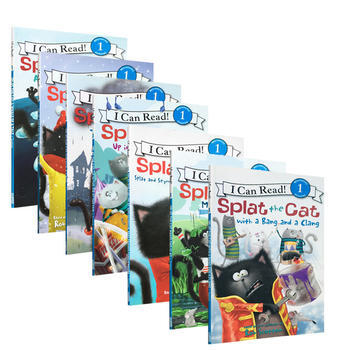

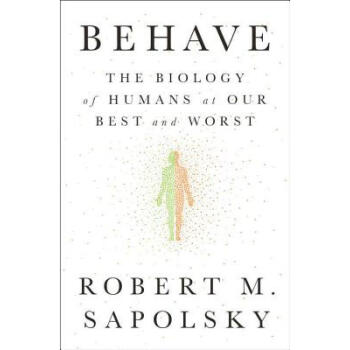


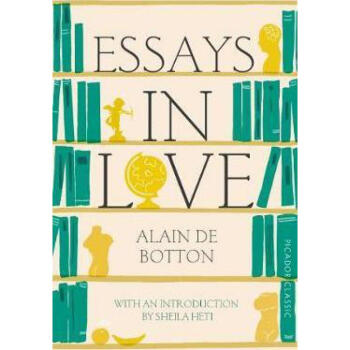
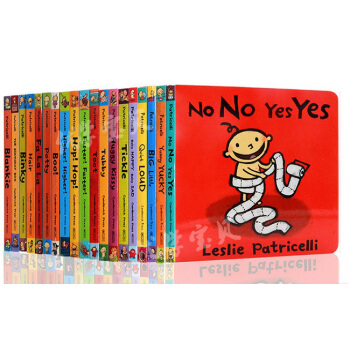
![[现货]日文原版小说 反转 リバース Reverse 凑佳苗 户田惠梨香 藤原龙也新剧原著 文库本 pdf epub mobi 电子书 下载](https://pic.tinynews.org/12419823812/5912b840N3228962c.jpg)
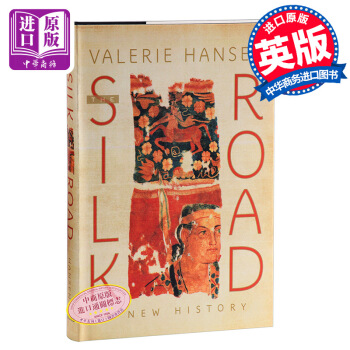
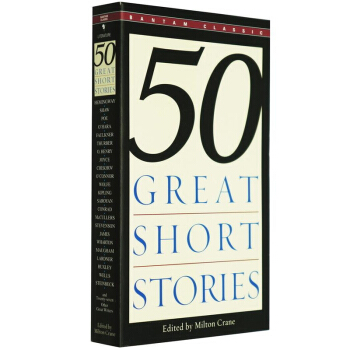

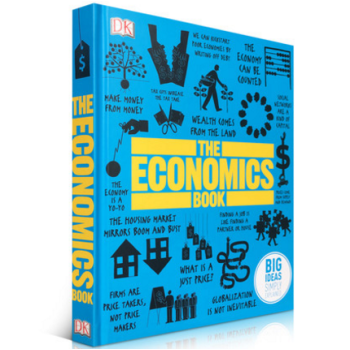
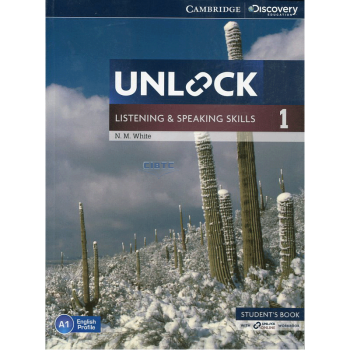

![英文原版 King Bidgood's in the Bathtub 浴缸里的国王 [4-8岁] pdf epub mobi 电子书 下载](https://pic.tinynews.org/13160432701/5940dcfaN3435945b.jpg)

